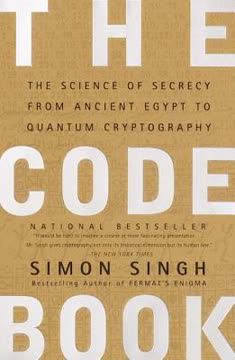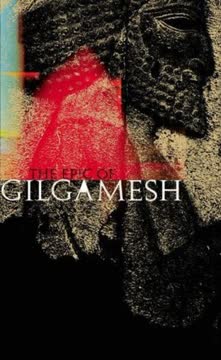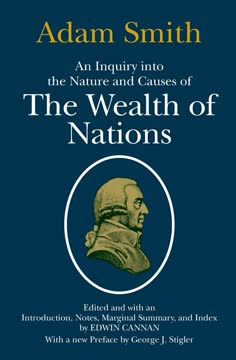Key Takeaways
1. Ancient Roots: Cryptology's Birth in Secrecy and Transformation
Thus the inscription was not secret writing, but it incorporated one of the essential elements of cryptography: a deliberate transformation of the writing.
Early transformations. Cryptology's recorded history begins in ancient Egypt around 1900 B.C., not for secrecy, but to add dignity or demonstrate scribal skill through unusual hieroglyphs. This marked the first element: deliberate transformation of writing. Later, Egyptian funerary texts added secrecy, aiming to intrigue readers into reading blessings, a form of quasi-cryptology.
Global emergence. Secret writing appeared independently in various ancient civilizations, including India (listed as an art for women), Hebrew texts (atbash substitution), and Greece (Homer's "deadly devices," Herodotus's hidden message, the Spartan skytale transposition). These early forms were often simple, sometimes steganographic (concealing the message's existence), and lacked systematic cryptanalysis.
Arab breakthrough. The science of cryptanalysis was born among the Arabs, driven by linguistic studies of the Koran. They were the first to document methods like frequency analysis, recognizing that letter frequencies are constant in a language. This fundamental technique, described by Qalqashandi based on Ibn ad-Duraihim's work, became the cornerstone for breaking simple substitution ciphers.
2. Renaissance Dawn: The Invention of Polyalphabetic Ciphers
With this invention, the West, which up to this point had equaled but had never surpassed the East in cryptology, took the lead that it has never lost.
Alberti's innovation. Leon Battista Alberti, the "Father of Western Cryptology," introduced the cipher disk in the 15th century, creating the first polyalphabetic cipher. This system used multiple cipher alphabets, changing the substitution for plaintext letters based on the disk's position, a significant leap beyond simple monoalphabetic substitution. He also pioneered enciphered code.
Tableau and key. Johannes Trithemius introduced the square tableau in 1518, a systematic way to display multiple cipher alphabets. Giovan Batista Belaso proposed using a literal keyword ("countersign") to select alphabets from the tableau, making keys easily changeable and memorable. Blaise de Vigenère later developed an autokey system using the plaintext itself as the key, though a simpler, less secure system now bears his name.
Nomenclator dominance. Despite these polyalphabetic advancements, the nomenclator (a mixed cipher alphabet combined with a code list) remained the dominant system for centuries (1400-1850). Its popularity stemmed from its perceived security (due to homophones and code elements) and its relative speed and reliability compared to early polyalphabetic methods, which were prone to errors that could render messages unreadable.
3. The Black Chambers: State-Sponsored Espionage Through Mail
This gave him many intimacies with the king, and made him an important man.
Rise of state cryptology. The growth of diplomacy in the Renaissance led states to establish dedicated cryptologic offices, often called "black chambers." These secret bureaus intercepted, opened, copied, cryptanalyzed, and resealed diplomatic mail. France's Antoine Rossignol, serving Cardinals Richelieu and Mazarin and King Louis XIV, became legendary for his successes, influencing military outcomes and uncovering plots.
European network. Black chambers flourished across Europe, notably in Vienna and England. Vienna's Geheime Kabinets-Kanzlei was renowned for its efficiency, handling hundreds of letters daily and breaking numerous foreign ciphers. England's Decyphering Branch, dominated by the Willes family for generations, played a key role in exposing plots, including the Atterbury conspiracy, demonstrating the value of cryptanalysis in state security.
End of an era. The mid-19th century saw the decline and closure of most black chambers, including those in England, Austria, and France. This was largely due to growing liberalism and public outcry against government mail opening. However, the practice of intercepting communications for intelligence purposes would re-emerge with new technologies.
4. Telegraph & Radio: Catalysts for Modern Cryptology
The telegraph made cryptography what it is today.
Telegraph's impact. The invention of the telegraph in 1844 revolutionized communication speed and volume, creating a need for faster, more portable, and easily changeable cryptographic systems for military field use. This led to the adoption of ciphers, particularly polyalphabetic ones like the Vigenère, which could be printed on single sheets and whose security relied on variable keys rather than bulky codebooks.
Cryptanalysis advances. The increased use of ciphers spurred cryptanalytic research. Friedrich W. Kasiski's 1863 discovery of the general solution for periodic polyalphabetic ciphers (identifying key length via ciphertext repetitions) broke the perceived invulnerability of the Vigenère. This forced cryptographers to develop new, more complex field ciphers and cryptanalysts to devise new methods, accelerating the offense-defense race.
Radio's revolution. Radio, first widely used in WWI, brought unprecedented volume and continuity to intercepted communications. Unlike wiretapping, radio signals were easily accessible. This constant stream of intercepts elevated cryptanalysis from an auxiliary study to a primary, indispensable source of intelligence, capable of influencing events decisively and making cryptology a critical tool of warfare and statecraft.
5. World War I: Cryptanalysis Emerges as a Decisive Weapon
Never before or since has so much turned upon the solution of a secret message.
Room 40's birth. Britain's cutting of German transatlantic cables forced Germany to use radio, providing intercepts. Sir Alfred Ewing founded Room 40, which, aided by captured codebooks (Magdeburg), began reading German naval traffic. This intelligence contributed to early naval engagements and the U-boat war, highlighting the strategic value of radio intelligence.
The Zimmermann Telegram. Room 40's most significant achievement was solving the Zimmermann Telegram in 1917. This message, proposing a German-Mexican alliance against the US, was obtained via intercepted Swedish diplomatic cables and US diplomatic channels. Its revelation, masterfully handled by Captain William Reginald Hall, galvanized American public opinion and contributed significantly to the US entering WWI.
Tactical intelligence. On the Western Front, French cryptanalysts, notably Georges Painvin, broke the German ADFGVX cipher. His solution of a message detailing a German attack plan in June 1918 allowed the French to prepare and halt the offensive, a crucial turning point. German cryptanalysts also achieved tactical successes, particularly against Russian cleartext and simple ciphers (Tannenberg) and later against Allied field ciphers (M-209, Ploesti raid).
6. The Interwar Crucible: American Innovation & the Rise of Machines
With this solution of Friedman's, world leadership in cryptology passed to America.
Yardley's Black Chamber. Herbert O. Yardley established the American Black Chamber (MI-8) after WWI, a joint Army-State Department cryptanalytic bureau. It achieved notable successes, including breaking Japanese diplomatic codes and providing crucial intelligence during the 1921 Washington Naval Conference, influencing treaty negotiations. However, it was controversially closed by Secretary of State Henry L. Stimson in 1929.
Friedman's genius. William F. Friedman, the "greatest cryptologist," led the Army's Signal Intelligence Service (SIS). His interwar work was foundational: he developed the Index of Coincidence, introducing statistical methods to cryptanalysis, and classified cipher systems logically. He also solved early rotor machines, a feat unmatched globally at the time, establishing American leadership in the field.
Machine age dawns. The interwar period saw the invention and development of practical cipher machines, particularly those based on the rotor principle (Hebern, Scherbius, Damm/Hagelin). Gilbert Vernam's invention of the on-line Vernam system (pulse addition) and the concept of the one-time pad provided theoretically unbreakable encryption, though practical limitations hindered widespread adoption initially. These mechanical innovations laid the groundwork for WWII cryptography.
7. World War II: Cryptology Shapes Global Conflict
For in World War II cryptology became a nation's most important source of secret intelligence.
Midway and Yamamoto. US cryptanalysts (FRUPAC) broke the Japanese JN25 naval code, providing critical intelligence on Japanese plans for the Battle of Midway. This allowed the US to ambush the Japanese fleet, a decisive turning point in the Pacific. Later, solving Yamamoto's itinerary led to his successful interception and death, a major blow to Japanese morale and leadership.
Battle of the Atlantic. Allied cryptanalysis, particularly against German U-boat communications (aided by captured codebooks and the U-505 capture), provided vital information on wolf pack locations and tactics. This intelligence, combined with direction-finding, was crucial in turning the tide against U-boats and securing Allied supply lines.
Global impact. Cryptanalysis influenced operations across all theaters:
- German Pers z read US diplomatic codes (Fellers leak), impacting North African strategy.
- Italian SIM used Yugoslav code solutions for deception.
- German military cryptanalysts achieved tactical successes on the Eastern Front.
- Allied censorship and counterintelligence used secret ink and microdot detection to expose spy rings.
The sheer volume of radio traffic and the demonstrated value of cryptanalysis elevated it to the most important source of secret intelligence for all major powers.
8. The Unbreakable Cipher: Theory Meets Reality
The one-time system is unbreakable both in theory and in practice.
Vernam's concept. Building on his on-line cipher system, Gilbert Vernam, with contributions from Joseph O. Mauborgne, developed the concept of the one-time system. This involves using a random key of the same length as the plaintext, used only once.
Theoretical security. The one-time system is theoretically unbreakable because, for any given ciphertext, every possible plaintext of the same length is equally likely when combined with a truly random key. There is no statistical pattern or redundancy for a cryptanalyst to exploit, even with infinite time and text.
Practical limitations. Despite its perfect security, the one-time system is not universally used due to the immense logistical challenge of generating, distributing, and managing truly random keys of sufficient length for all communications. This makes it impractical for high-volume, dynamic military field communications, though it is used for high-security diplomatic and espionage traffic.
9. The Cold War & NSA: Cryptology as a Superpower Tool
This has beyond question rocketed Red accomplishments in this black art to Sputnik height.
Centralization in the US. Recognizing the critical importance of cryptology and the need for coordination, the US consolidated its military cryptologic agencies into the Armed Forces Security Agency (AFSA) in 1949, later expanding it into the National Security Agency (NSA) in 1952. NSA became the largest US intelligence agency, responsible for both communications security and foreign communications intelligence for the entire government.
Modern methods. NSA operates on an unprecedented scale, employing thousands of personnel and vast computing resources. Its research and development efforts push the boundaries of mathematics, engineering, and linguistics to create advanced cryptographic systems and sophisticated cryptanalytic techniques capable of tackling complex modern ciphers and electronic signals (SIGINT).
Global duel. The Cold War intensified the cryptologic duel. While NSA reads the communications of numerous nations, the Soviet Union also developed highly sophisticated cryptology, utilizing one-time pads for top-level espionage and diplomatic messages and advanced cipher machines. The ongoing competition drives continuous innovation in both offensive and defensive cryptology.
10. Human Factor: Errors, Intuition, and Dedication Drive Success
Without their translations, the prosecutor later wrote to Mrs. Friedman's chief, "I do not believe that this very important case could have been won."
Errors as opportunities. Throughout history, cryptographic errors have been a cryptanalyst's greatest ally. Simple mistakes by cipher clerks, violations of security protocols, or technical failures have often provided the crucial entry points into seemingly unbreakable systems, from WWI German ciphers to WWII Japanese codes and even modern systems.
Intuition and flair. Beyond systematic methods and computational power, cryptanalysis often relies on human intuition, pattern recognition, and inspired guesswork. Figures like Painvin, Beurling, and Friedman demonstrated an uncanny ability to spot subtle clues and make leaps of logic that machines or less experienced analysts might miss.
Dedication and sacrifice. The history of cryptology is filled with individuals who dedicated their lives to the craft, often working in obscurity under immense pressure. Their perseverance, intellectual rigor, and willingness to endure mental strain and long hours were essential to breaking complex systems and providing vital intelligence, highlighting that human skill and dedication remain indispensable alongside technological advancements.
Last updated:
Review Summary
The Codebreakers is praised as a comprehensive, definitive history of cryptography up to the 1960s. Readers appreciate its detailed accounts of historical events, technical explanations, and engaging anecdotes. Some find it dated, lacking modern cryptography coverage and occasionally showing bias. The book's length and depth are both commended and criticized. Many consider it essential reading for cryptography enthusiasts, though some suggest supplementing with more recent works. Overall, it's viewed as a monumental, if sometimes challenging, exploration of codes, ciphers, and their impact on history.
Similar Books
Download PDF
Download EPUB
.epub digital book format is ideal for reading ebooks on phones, tablets, and e-readers.










